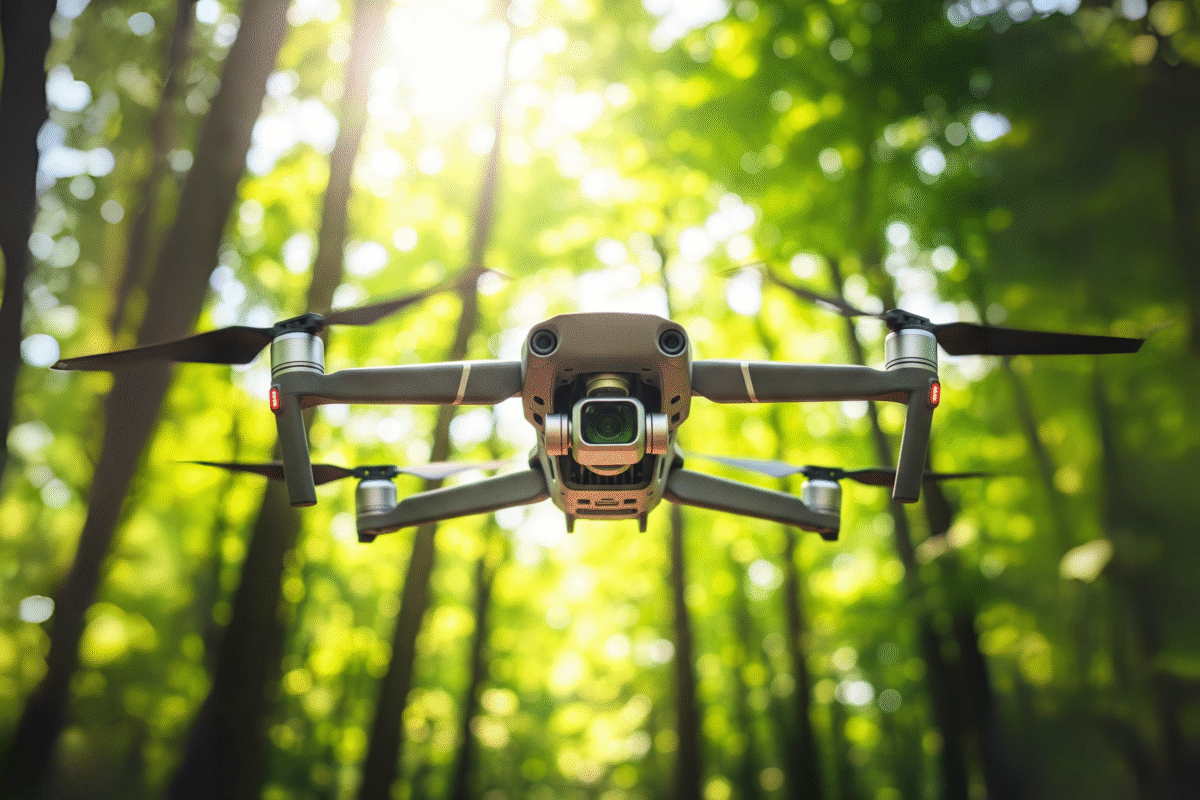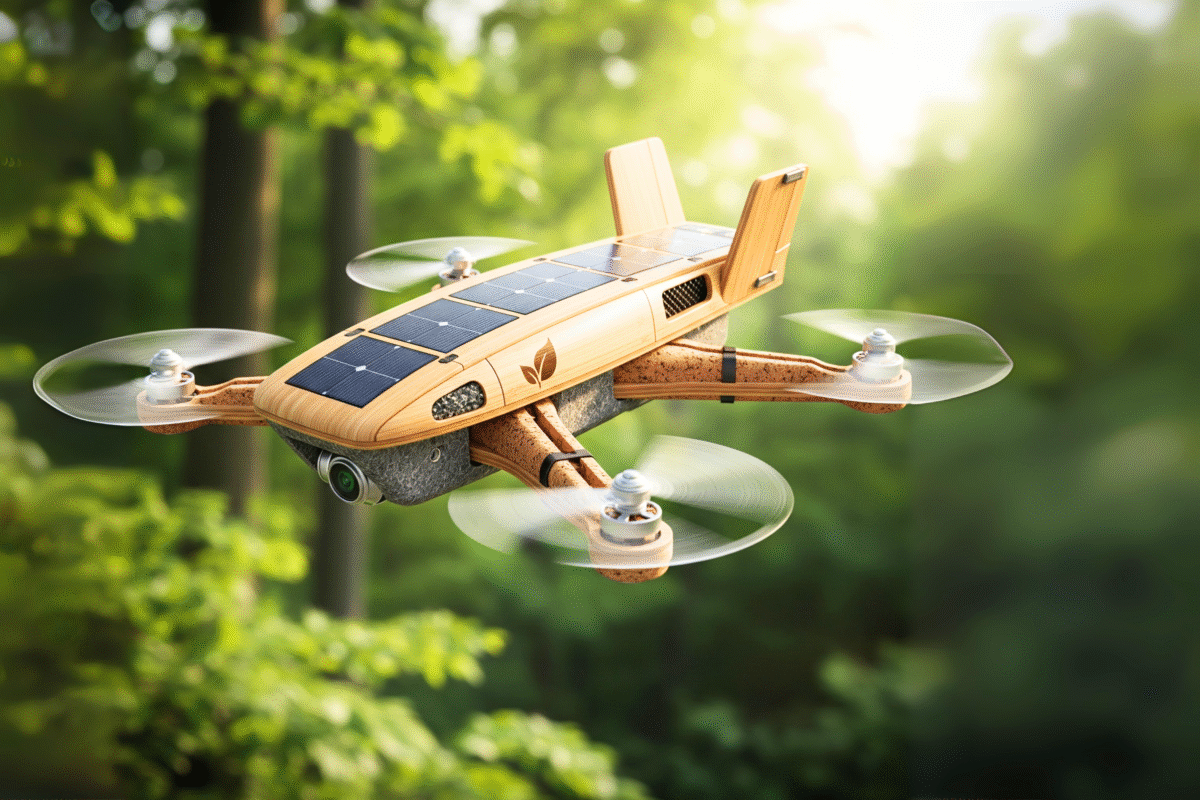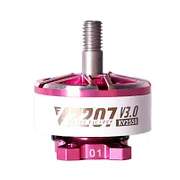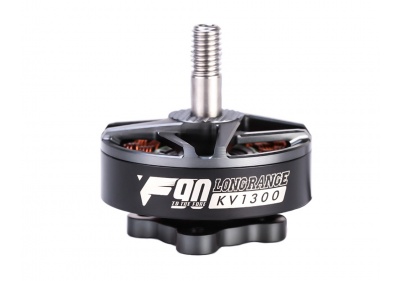Drones
Understanding the Drone Motor: The Heart of Every Eco-Friendly Drone
Choosing the right drone motor is the key to unlocking power, speed, and flight performance.
A drone motor is the most important part of any drone. It provides the necessary power for the propellers to operate, readying the drone to lift off. Without motors, drones would merely be scraps of plastic and wires. The reason a drone can reach great altitudes and speeds is the motor it has integrated within.
Your experience in the hobby or field will affect your decision on whether to build or buy a drone. One of the most critical steps on the journey of new users is choosing the right motor. In this blog, you will discover which parts define a motor and which types are utilised in constructing them. Finally, you will learn how to build your very own drone motor. Whether you’re a student, hobbyist, or simply a drone enthusiast, this blog is designed to help you understand its content incrementally.
What is a Drone Motor, and what is work?
A drone motor is a small but powerful machine. It produces electrical energy into motion and spins the propellers. This spinning creates lift, access to the drone to take off from the ground.
Here’s why motors are important in drones:
- They control movement: Up, down, left, right, forward, and backwards movements are all within their control.
- They decide speed and stability.
- They help to maintain the drone in the air.
Most drones have four motors. This is why many are called quadcopters. More motors usually mean better stability and the ability to carry more weight, like cameras or sensors.
Which Motor is Used in Drone?
Brushless motors are the first choice for energy saving and ease of handling among the majority of modern-day drone users. It is no surprise that these motors are preferred and sought after.
Why Brushless Motors?
- Extended Life: Less wear and tear results from not using brushes.
- Less Noise: A more peaceful flight.
- Cooler Operation: Battery power is conserved by cooler operation, which generates less heat.
- Improved Performance: Provides powerful push with less effort.
These engines are more environmentally sustainable technologies because they expend less energy. They are, after all, optimal for agricultural drones as well as those used in photography and videography. Additionally, they are beneficial in rescue operations.

What About Brushed Motors?
Brushed motors are older and cheaper. They are helpful for toy drones, but not for professional use. They wear out quickly and are not very energy-efficient. Still, they are great if you’re learning or experimenting at home.
Parts of a Drone Motor: Simple Breakdown
- Stator: A fixed part that holds coils of wire (windings).
- Rotor: A section that rotates and has attached magnets that undergo rotation.
- Windings: Copper wires that have a magnetic field formed around them when current flows through them.
- Bearings: Small rings that aid the rotor in spinning smoothly and without interruptions.
- Magnets: Strong pieces that help convert electricity into movement.
Each of these parts works together to spin the propellers.
How to Build a Drone Motor?
Constructing a drone motor at home is both educational and enjoyable. It allows for the exploration of the mechanical world around us, and even allows one to recycle something that was once considered a useless item. Although it is not as efficient as its commercially produced counterpart, it can still help teach you things while helping the environment.
Some steps on how you can build your drone motor step by step:
1. Materials use
- 0.3 mm copper wire used
- Strong neodymium magnets are used for the best work
- Metal rods or bolts are used for the stator
- Plastic or metal disc (for rotor base)
- Bearings (from old toys or fans)
- Recycled tools and motor parts (old electronics are an excellent source)
2. Make the Stator
- Encircle each metal rod with the copper wire.
- Constructing a basic motor, use 12 coils.
- Use tape or glue to neatly and firmly secure the wires.
3. Build the Rotor
- Attach the magnets evenly around the edge of your plastic disc.
- Make sure the poles (north/south) alternate for best results.
4. Assemble the Motor
- Insert the rotor into the stator.
- Add bearings to reduce friction.
- Secure everything with screws or eco-safe glue.
5. Test the Motor
- Connect it to a battery (use low voltage first).
- The rotor should start spinning.
- If not, check your wires and magnet placement.
How to Select the Right Drone Motor for Your Build for a New User
Before buying or building your drone motor, think about what your drone will do. Is it for carrying a camera? It’s just for fun? Or fly outdoors or indoors?
How to choose the right one:
- Drone Weight: Heavyweight drones need stronger motors.
- Weight Ratio: The Drone’s weight should be at least twice that of its motor.
- Propeller Size: More powerful drone motors (engines) are required for larger propellers.
- Battery Type: Check your motor and the voltage of your battery (3S, 4S, etc.) match.
- ESC work: The motor’s current and voltage must be managed by the electronic speed controller.
Advice on How to Use a Drone Non-Harmfully
We should respect nature even though we all want to enjoy ourselves with drones. You can use your drone more sustainably by taking the following actions:
- Batteries that can be charged: Individual ones should not be thrown away
- Don’t throw away old parts; save the motors and wires from broken things.
- Minimize damage to wildlife by flying in designated areas.
- Save power and prevent overheating of your machine’s engine by turning it off during periods of inactivity.

Conclusion:
Small in size as it may be, the drone motor is an essential component of the drone. Its functionality involves converting electrical energy into motion so that the drone can be operated. The brushless motors are the best for most budget-priced drones; they are efficient, quiet, and durable.
If you are creative and curious enough, you can look up ways to create a drone motor yourself. You can learn new skills in a more eco-friendly way by utilising waste materials.
Keep in mind that for every recording session in the air, drone race you partake in, or toy drone flight you initiate, the motor is essentially the ‘brain’ of your apparatus. As a reminder, exercise caution and respect the environment at all times.
Big dreams grow from small beginnings.
1. Micro Motor – T-Motor Velox V2207 V3 Brushless Motor (KV1750)
- Features: Strong and light motor. Works smoothly. Made for speed and quick moves. The KV1750 strikes a good balance between speed and power.
- Uses: Best for racing drones and freestyle flying. Good for quick turns and tricks.
- Goal: To give fast and smooth power for fun and exciting drone flights.

2. Long Range Motor – T-Motor F90 2806.5 Long Range Motor (1300KV)
- Features: Big and powerful motor. KV1300 saves battery for long flights. Strong build for heavy use. Runs smoothly.
- Uses: Best for long-distance drones. Good for carrying cameras or heavy parts.
- Goal: To give steady and efficient power for long and stable flights

FAQ’s
1. A drone motor spins the propellers.
2. This spinning helps the drone lift off the ground.
3. The motor helps, such as moving up, down, left, or right.
4. Without a motor, the drone does not fly.
5. It is the most important part of the drone.
1. Brushless motors are powerful than brushed motors. Also, it’s easy to use
2. They last longer than brushed motors.
3. They make less noise during the flight.
4. They don’t get hot quickly, so they save battery.
5. They are best for drones used in photography, videography, and rescue work.
Yes, you can make a simple motor at home for learning purposes and enjoyment.
1. 0.3 mm copper wire
2. powerful magnets (neodymium)
3. Metal rods or bolts
4. A plastic or metal disc
5. Bearings (from old toys or fans)
6. Old electronics to reuse parts
To pick the right motor:
1. Know your drone’s weight.
2. Use stronger motors for heavier drones.
3. Match the motor with your battery (like 3S or 4S).
4. Use the prepect size of the propellers.
Some simple tips:
1. Use rechargeable batteries
2. Save parts from old or broken drones
3. Don’t fly near birds or animals
4. Fly only in allowed places
5. Please turn off your drone when not using it to save power

